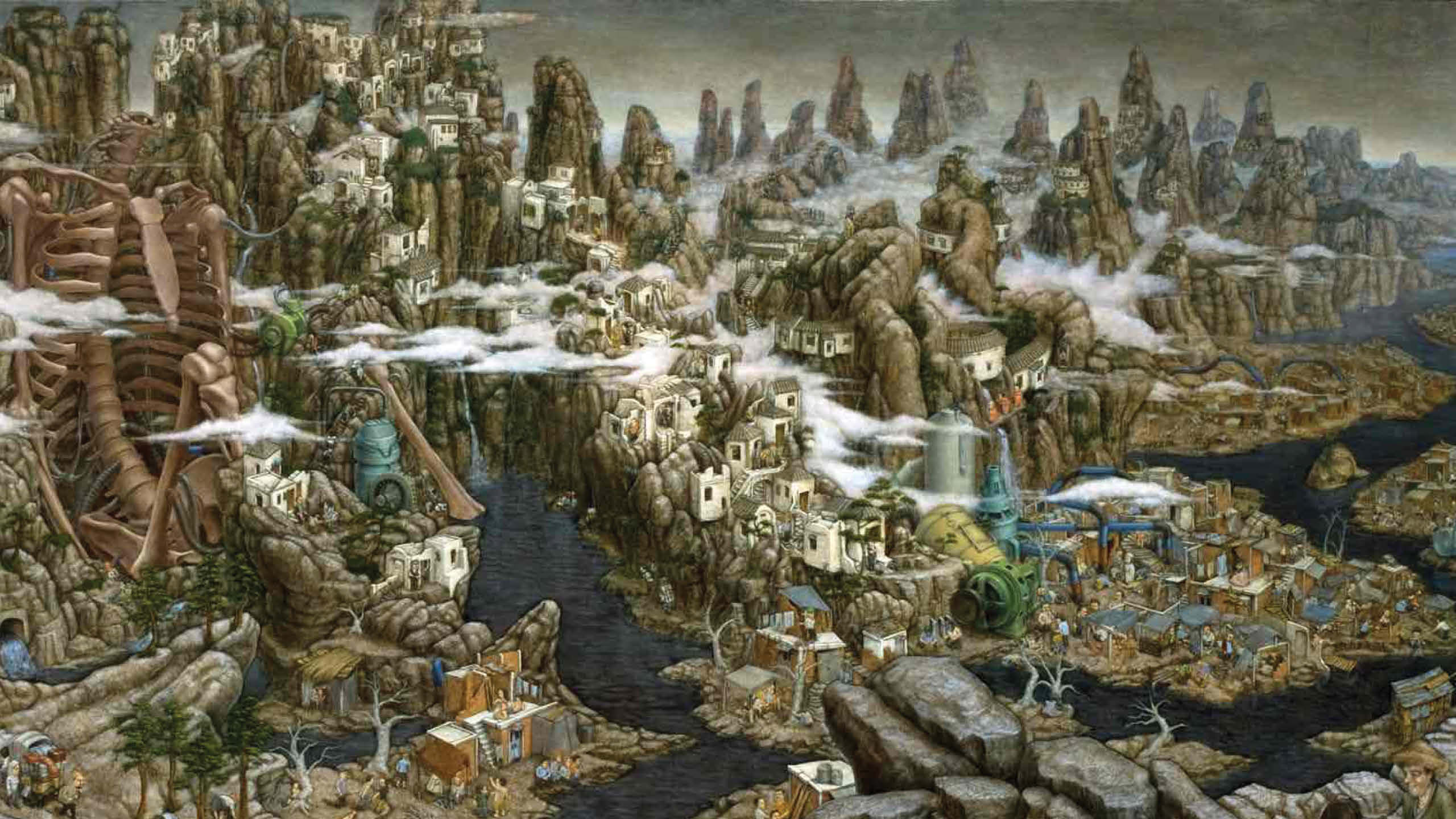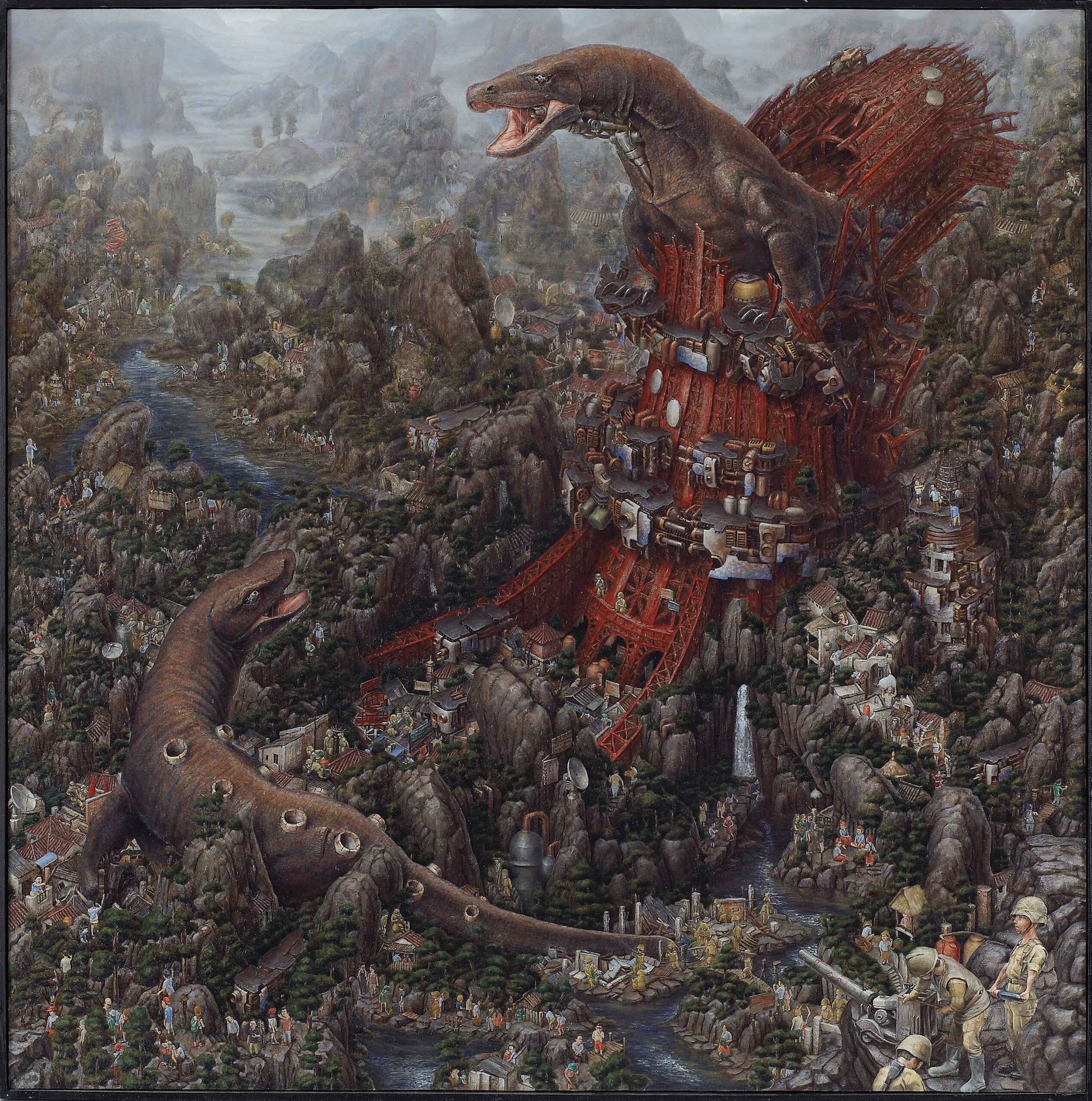Perspective. Constantly, the world and its inhabitants will help yours change at some point in whatever kind of attitude. For Hiroki Kakinuma, watching the world and its events pass by is already art in itself and has helped him create the award-winning, surreal art he’s become famous for.
Who is Hiroki Kakinuma?
A Tokyo-born artist who takes solace and inspiration in the serene quiet provided by his art studio at home, Kakinuma has been in love with art, specifically painting, since childhood. By the age of 17, having the constant desire to paint for the rest of his life urged him to think of what he’d be studying in higher education. By his college years, he was studying oil painting at an art college before transferring to Musashino Art University in his third year and graduating with a Master’s degree paired with top honors in 2011.
“Thanks to early encounters as a student, a Tokyo art gallery approached me. And ever since, I’ve had my artwork exhibited in the Ginza area in Tokyo as well as numerous opportunities for art shows outside of Japan, especially in Asia.”
Related read: Making Revolutionary Art: Looking Back on Juan Luna’s Mastery
Changing Perspectives
Typically, Kakinuma’s artworks are known to be paintings over 1 to 2 meters tall on each side and range from curious portraits of people with animal heads to magnificent and immense, jaw-dropping landscape portraits that fill the eyes with infinite details (big and small) just waiting to be discovered. When it comes to the portraits depicting half-human, half-animal subjects, Kakinuma focuses on the goal of changing perspectives.
“When I use animals, I value the images of the animals that people commonly have. For instance, if it’s a chicken, you may think of food. If a weak creature appears in front of us by morphing into different shapes and sizes, how do we see them? You may become curious, or you may be frightened. Also, you may be better able to perceive things that you hardly noticed before. Because I want to pay attention to such situations and reactions, I draw animals.”
As children, the world around us has always been a magical and stimulating place. Movies, art, and books have amplified our imaginations, helping us mold new worlds sometimes based on the vaguest ideas. Kakinuma, who’s been greatly influenced by the special effects he sees in movies as a child, mixed these childhood memories with his own art to birth portraits that show spectacular and monstrous beasts overwhelming cityscapes.
“I have been greatly influenced by special effects which I have loved since my childhood.” Kakinuma says, “I watched Godzilla and Ultraman on TV a lot. I loved monstrous beasts, and at the same time I loved watching broad views of the streets stretched below them. I used to paint the world based on how I imagined it. It was very apparent to all that my paintings were influenced by certain stimuli. Then I reached a plateau. After an agonizing time, I went back to my roots again, the special effect work.”
Through his work, Kakinuma wants to leave his artwork as a sort of time capsule for future generations as in his world of painting, some kind of event always tends to occur and stirs either panic, unothered observation, or complete indifference from these subjects.
“My art is a record of events. That being said, it’s not on such a grand scale, but rather I pick up familiar things from daily life…by depicting such diverse situations, I think I can see things people don’t notice or let pass in daily life largely because it’s a strange world.”
Kakinuma’s art has been displayed in many art exhibits both abroad and in his home country. Some of these include the 2017 exhibition at Art Sage Jakarta 2017 and Art Taipei 2017 at the Taipei World Trade Center. In October of the same year, his painting process was published on Bijutsu no Mado (The Window of Arts) program before one of his works made it to the July 2018 issues of Art Collectors’ magazine–one of the most prestigious art magazines in Japan. By April 2019, Kakinuma also became one of the authors of “Techniques of Painting”, a companion guidebook/manual for aspiring artists or art enthusiasts published by the Musashino Art University Press in Tokyo, Japan. In 2020, he also exhibited his work at Art Fair Philippines 2020 and participated in a joint exhibition with Yo Takagi at the SHUKADO Gallery in Ginza, Tokyo from July 3 to 12. The autumn of 2021 also presented the chance for Kakinuma to exhibit several of his pieces in an exhibition at Bunkamura Gallery in Tokyo titled ‘Seven Artists’ Views’ which also included six other artists.
“I am blessed to have had numerous opportunities to show my artwork, all of which have given me precious experience and great stimulation.”
Considering the striking subjects, Kakinuma’s art has garnered all kinds of reactions and reviews. Among these, probably the most memorable ones for Kakinuma includes the time one of his paintings was acquired by the illustrious Ueno Royal Museum in 2017 which is managed by the Japan Art Association–the oldest art association in Japan established in 1879 and is currently governed by its honorary patron Prince Hitachi.
“I was so excited to be a part of its long history of art.” Kakinuma says, “In 2020, the painting was exhibited again as part of the museum artifact exhibition, which stands out in my memory as I got many very positive, favorable comments.”
In 2023, Kakinuma was also one of the artists who exhibited his work during Art Philippines 2023 at The Link, Ayala Center where he was able to see live reactions from his audience.
“I was thrilled to see the reactions of the audience firsthand to the intended messages of my paintings.” Kakinuma says, “I exhibited at Art Philippines shows before, but this is the first time that I personally visited the Philippines, and I was very inspired by the live reaction of the audience as well as the culture of the Philippines.”
Related read: The Heart of an Artist: Who is Jefrë
Inspiration from the Normal
Kakinuma’s portraits are some of the pieces in the art world that have left huge impressions on their viewers. As predicted, creating art like this isn’t easy. For Kakinuma, the entire process of creating artwork is a challenge with the most difficult stage being the initial stage of presenting the idea followed by solidifying the concept.
“I don’t have any particular method to overcome it, but I can often get over the hurdle if I take time to get away from my sketchbook and do something different, such as traveling, chatting with people, watching movies and so on, then my idea starts to take shape.” Kakinuma says, “However, if I don’t take the time to sit in front of a white canvas for some number of hours, I cannot create anything as artwork even though I have an idea. In fact, my idea for the next artwork often comes to me while painting.”
Kakinuma has created lots of portraits and many of them are his favorites. Among his top three personal favorites, however, include milestone artworks that have influenced his future works.
Unmanifested Reality (2011)

“While learning oil painting, this artwork came about when I was stuck at a dead end with the Western style composition. I used the composition of Chinese monochrome landscape paintings. I developed the expression while I was exploring one of the origins of Japanese paintings. I love the world of air and mist.”
From the Iron Tower with Love (2014)

“This one came about when I was re-tracing the roots of my artwork, i.e., what were the influences on me. In order to incorporate special effects into my artwork, I traveled to Komodo Island to learn about the Komodo Dragon. On March 11, 2011, the Great East Japan Earthquake occurred, which triggered a nuclear accident. In the midst of that incident, I created this artwork while utilizing the reality of society by referring to the Godzilla film with the theme of the hydrogen bomb.”
Obelisk (2021)

“The pandemic changed our lives completely. During the stay-at-home period, we couldn’t see our neighbors who should be home. I felt that was the time to re-think the existence of humanity itself. In this painting, various things are happening in each unit of a high-rise building. But people next door live their lives without being aware of it. By recording that extreme time during the pandemic, I created this work to let future generations know how things were.”
On the topic of AI-art
As many creatives in the art industry have noticed, AI tools have slowly become more common. For Kakinuma, these tools are interesting developments.
“I found it interesting as a tool. Current AI technology derives answers from the multitude of answers already existing in the current world.” Kakinuma explains, “When humans create something, they are influenced by something no matter how small it may be. The difference between humans and AI is whether the power to create an idea exists or not. If AI can accumulate the imagination of humans, it may produce a new expression, that’s where I feel potential. I myself don’t use AI effectively. However, I am not certain yet if AI will be involved in my artwork in the future or not, but I am watching it only because of its uncertainty.”
Practicality or Passion? Should there be only one to choose? Which would you choose and which would you tell people to choose?
“It’s a difficult question. In order to shape the passion, you need practical systems. For example, the studio provides a practical environment for creation, but in order to pursue it, a love of work is the most powerful. It is important not to lose your passion for why you are doing it. Everybody has his/her own way, so whether it’s practicality or passion, it is essential to know what the driver is to continue to do things.”
Related read: Vulnerability in Art: A Quick Recall of Felix Hidalgo’s Work


